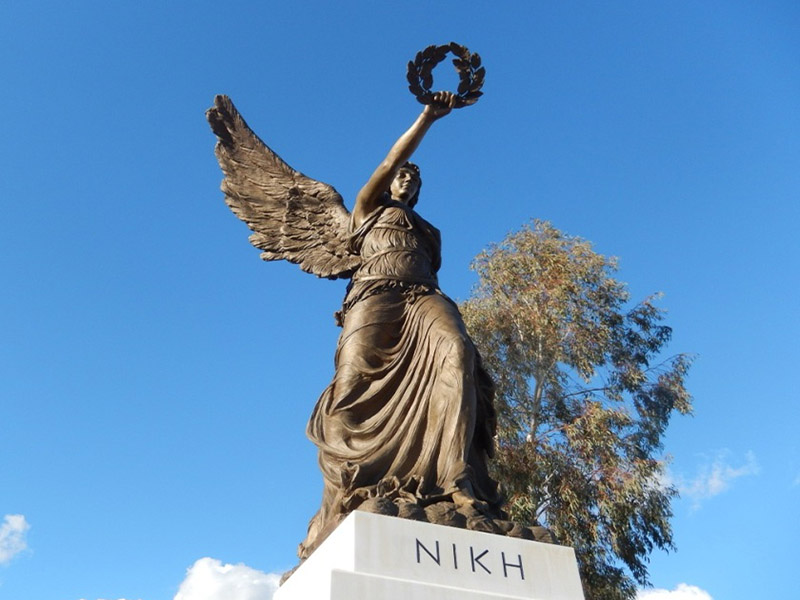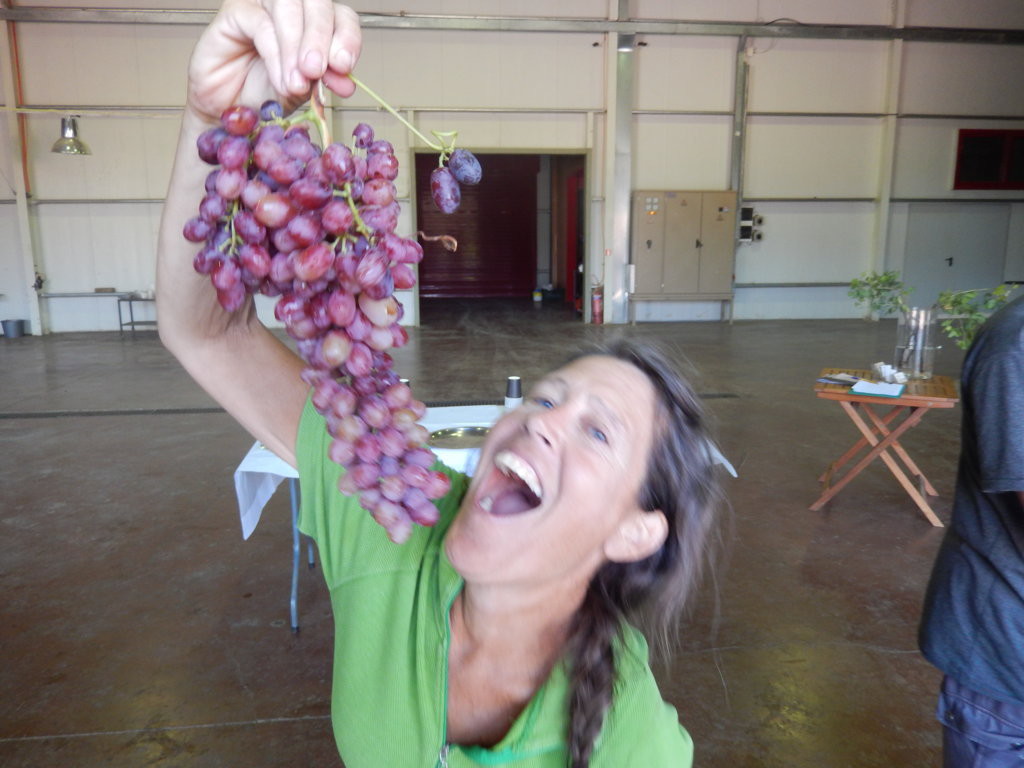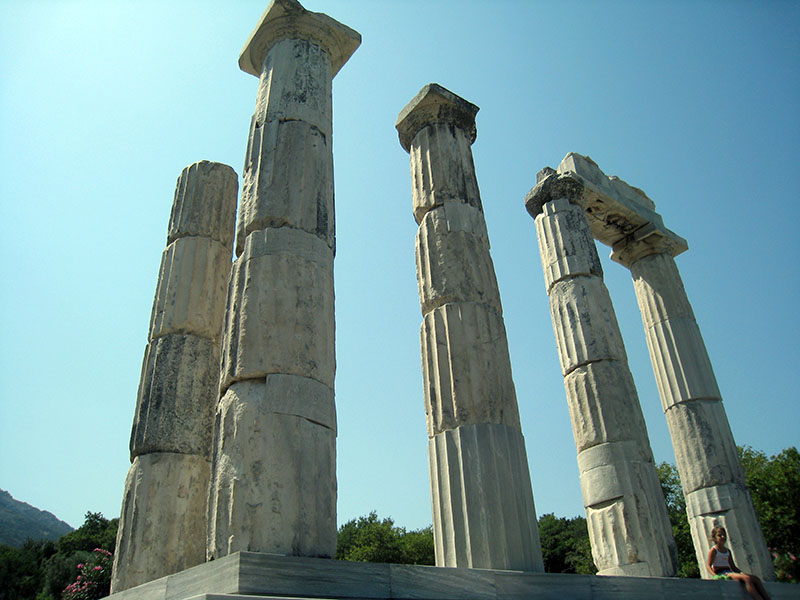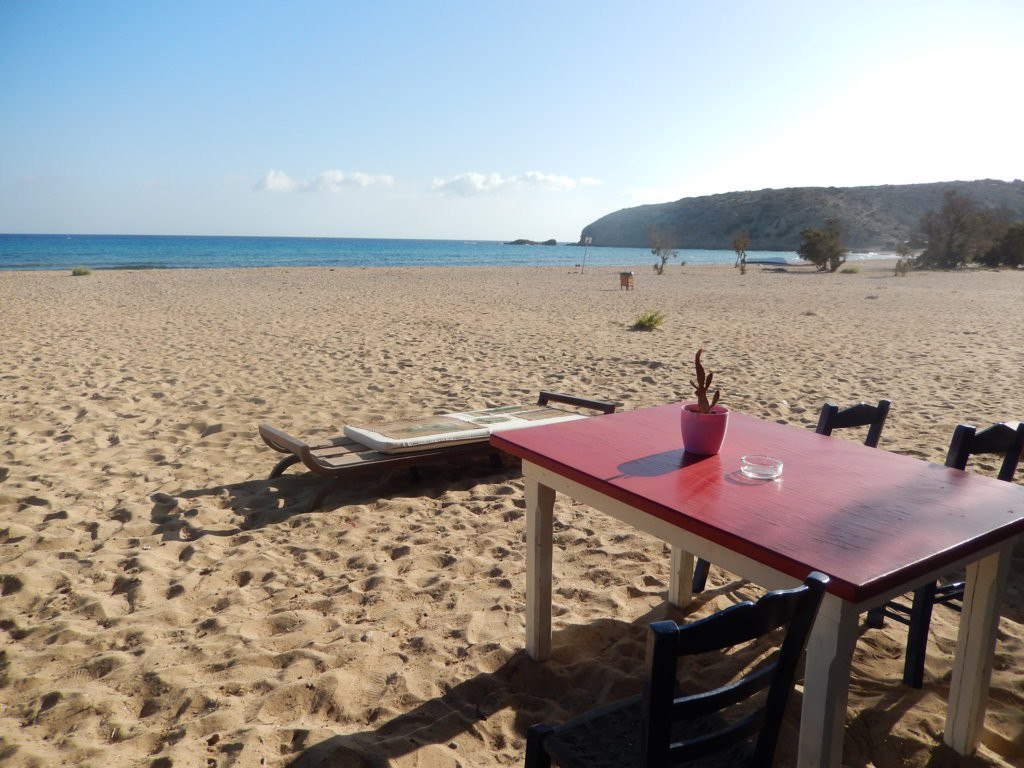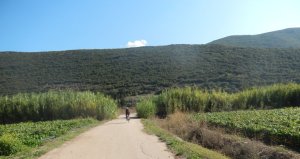It’s not known who dubbed Evia’s megalithic stone structures “Dragon Houses” (Drago Spita). One is tempted to say a marketing wizard since the name alone lures adventure seekers to want to hop a ferry to Evia to come explore such unusual sounding sites. But that would be a wrong guess because these constructions acquired their interesting name centuries ago, perhaps millennia ago.
 The Dragon Houses could have been built around the time of Stonehenge – 2000 to 3000 BC — or they could be contemporary to Gobekli Tepe, 11,000 years old. No one knows for sure. Like those sites, the Dragon Houses have no mortar or connective material. The megalithic stones are kept in place with lintels and jambs with a remarkable geometric harmony.
The Dragon Houses could have been built around the time of Stonehenge – 2000 to 3000 BC — or they could be contemporary to Gobekli Tepe, 11,000 years old. No one knows for sure. Like those sites, the Dragon Houses have no mortar or connective material. The megalithic stones are kept in place with lintels and jambs with a remarkable geometric harmony.
 There are about two dozen Dragon Houses located in the southern region of Evia near Karystos. No one knows their purpose. Some say they were a sanctuary to Zeus or Hera. Others say they were warehouses for supplies. A recent scholar argues they were built for shepherds. None of these proposals are satisfactory when you ponder how did the ancients erect such colossal slabs over doorways and carefully lay the vaulted stone ceilings, all at such great heights.
There are about two dozen Dragon Houses located in the southern region of Evia near Karystos. No one knows their purpose. Some say they were a sanctuary to Zeus or Hera. Others say they were warehouses for supplies. A recent scholar argues they were built for shepherds. None of these proposals are satisfactory when you ponder how did the ancients erect such colossal slabs over doorways and carefully lay the vaulted stone ceilings, all at such great heights.
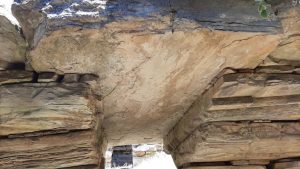 The largest and most famous Dragon House lies 1400 meters (1600 feet) high on Mt. Ochi. The hour-long hike on a dirt path starts at a grove of bewitching trees – see 15 second video. The higher you climb, the windier it gets until upon reaching the Dragon House you feel as if a mighty Greek god has flung you into the stratosphere – see 14 second video. The most striking feature of the Mt. Ochi Dragon House is the horizontal slab above the entry door. It is 4 meters long (13 feet), 2 meters wide, .30 meters thick and weighs 10 tons – see second video.
The largest and most famous Dragon House lies 1400 meters (1600 feet) high on Mt. Ochi. The hour-long hike on a dirt path starts at a grove of bewitching trees – see 15 second video. The higher you climb, the windier it gets until upon reaching the Dragon House you feel as if a mighty Greek god has flung you into the stratosphere – see 14 second video. The most striking feature of the Mt. Ochi Dragon House is the horizontal slab above the entry door. It is 4 meters long (13 feet), 2 meters wide, .30 meters thick and weighs 10 tons – see second video.
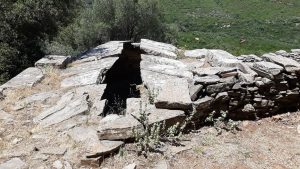 Right off the side of the road near Kapsala is a single Dragon House that is interesting because it seems to have been constructed in waves. There is the initial structure, then a second structure was built inside it where walls had collapsed. The ceiling of the second structure has wood beams which means it was re-built or upgraded at a later stage. See 1:52 minute video
Right off the side of the road near Kapsala is a single Dragon House that is interesting because it seems to have been constructed in waves. There is the initial structure, then a second structure was built inside it where walls had collapsed. The ceiling of the second structure has wood beams which means it was re-built or upgraded at a later stage. See 1:52 minute video
At the end of a paved road near Styra, follow a slightly steep path with haphazardly laid stone steps for about 8-10 minutes. There you will find three Dragon Houses that, although smaller than the one at Mt. Ochi, are impressive because they are clustered together (the more, the merrier) and they have interesting features, such as a round vaulted ceiling, protruding stone slabs like built-in tables and large niches. See 2:31 minute video. The quarries nearby 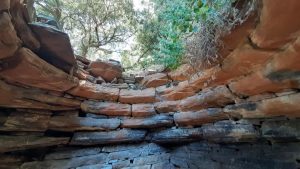 suggest that these Dragon Houses may have been an administrative center for the quarry masters. Nearby is a fourth structure that doesn’t fully qualify as a Dragon House because it lacks the trademark corbel roof, but its walls and portal are distinctly Dragonesque.
suggest that these Dragon Houses may have been an administrative center for the quarry masters. Nearby is a fourth structure that doesn’t fully qualify as a Dragon House because it lacks the trademark corbel roof, but its walls and portal are distinctly Dragonesque.
If yo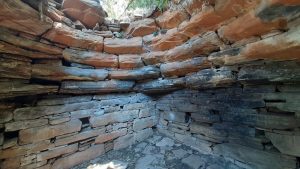 u ask someone what antiquities they would like to visit in Greece, virtually no one will say the Dragon Houses. They are really off-off-off the beaten track. When you put these hidden gems on your Greece Bucket List, you will join the ranks of exceptional Grecophiles.
u ask someone what antiquities they would like to visit in Greece, virtually no one will say the Dragon Houses. They are really off-off-off the beaten track. When you put these hidden gems on your Greece Bucket List, you will join the ranks of exceptional Grecophiles.
WINES & RUINS ON TWO WHEELS
Greek wineries and biking in the countryside where traffic is sparse are two elements that make 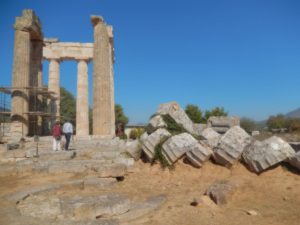 the Cycling 4 Wine events an entertaining way to spend a Sunday. I participated in the most recent ride this past October, 2014 in Nemea, one of Greece’s premier wine regions, located about an hour and a half drive from Athens in the Peloponnese peninsula.
the Cycling 4 Wine events an entertaining way to spend a Sunday. I participated in the most recent ride this past October, 2014 in Nemea, one of Greece’s premier wine regions, located about an hour and a half drive from Athens in the Peloponnese peninsula.
The Nemea and Attika regions have so many wineries that Cycling 4 Wine’s organizer, Themistokles Nicoletopoulos, is able to create new routes each year bringing cyclists and vinticulturists together. Themos has a connoisseur’s knowledge of fine indigenous wines and appreciates an elegant bicycle, like his Bianchi which he dubbed Pegasus.
This year 210 cyclists participated in the Nemea ride, most coming by their own car. For twenty euros the car-less crowd (I, for one) were transferred to Nemea by a coach rigged with a two-tiered trailer holding the passengers’ bicycles.
From 10:00 am to 4:00 pm, participants rode at their own pace from winery to winery following arrows spray painted on the road to show the turns. You can also download an app to your GPS or iPhone that maps the route. This year’s mileage was 42 kilometers (26 miles) with long flat stretches enhanced by two hills rising to 415 meters (1361 feet).
Nemea has an ancient history of wine making. One of its most popular and oldest varieties is the Agiorgitiko, a deep dark red wine whose grape vines, legend has it, were stained by the blood of the Nemean lion slewed by Hercules as one of his Twelve Labors. We were treated to an exquisite Agiorgitiko at the incomparable Pappaionannou Estate whose organic grapes have been cultivated by the family since 1876. At Domaine Rapani we tasted the exotic dry white wine known as Moschofilero whose ideal terrain is the high plateaus of Nemea. At the Nemea Wine Cooperative, founded in 1937, we sampled Malagousia, a white wine with citrus and peach characteristics, which was rescued from extinction in 1983 by a Halkidiki oenologist. The twenty euro entry fee included a buffet dinner at the Cooperative.
There were four places in ancient Greece where athletic events were held every four years: Ancient Olympia, Delphi, Isthmia and Nemea. The most exciting feature of this year’s Cycling 4 Wine was biking to Ancient Nemea for a private tour with Dr. Stephen Miller, a retired archaeology professor from UCLA Berkeley, who has been studying and digging at the site since 1973. It was akin to touring Mycenae with Heinrich Schliemann! Dr. Miller walked forty of us through the grounds and the museum explaining the history, telling rich stories and pointing out delightful aspects, such as the graffiti in the long spectacular tunnel leading to the stadium.
Starting in 1994, Dr. Miller helped launch the revived Nemea Games held every four years with sports and music and dance similar to the ancient Games. Anyone eight years and older can run in the foot race competitions in the stadium, 90 meters in length. Nowadays participants wear short white togas rather than compete naked as the original athletes did. Just as in the past, winners are crowned with a wreath of wild celery. The next Revived Nemea Games are scheduled for June 11, 2016 where a 7.50 kilometer race, “The Footsteps of Herakles,” will begin at the Temple of Herakles in Kleonai and end in the Nemea stadium.
The organizers of the Revived Games state that their aim is to reproduce the spirit of the original Games which sought to substitute athletic competition for war. Coincidentally, that same spirit of camaraderie and brotherhood is also present in Cycling 4 Wine events where riders gleefully pedal along rural roads flanked with vineyards and raise their wine glasses in a series of toasts at each winery on the itinerary.

